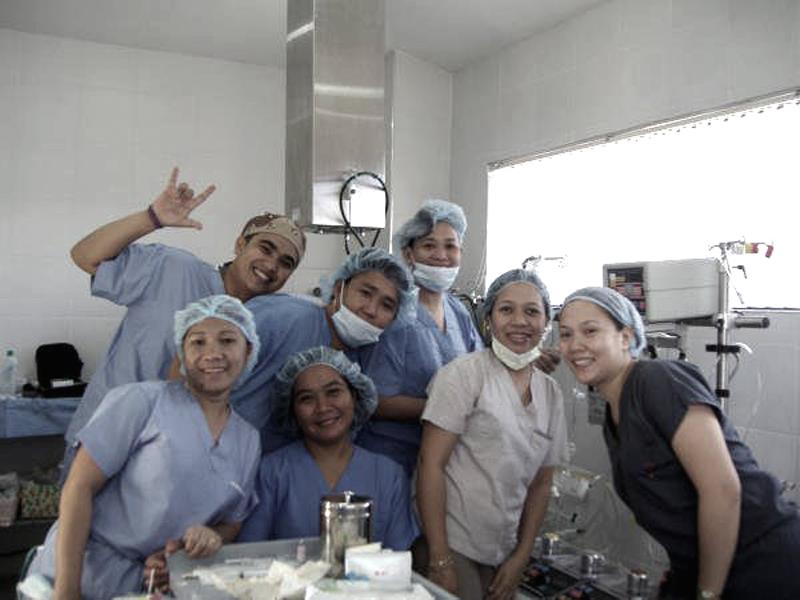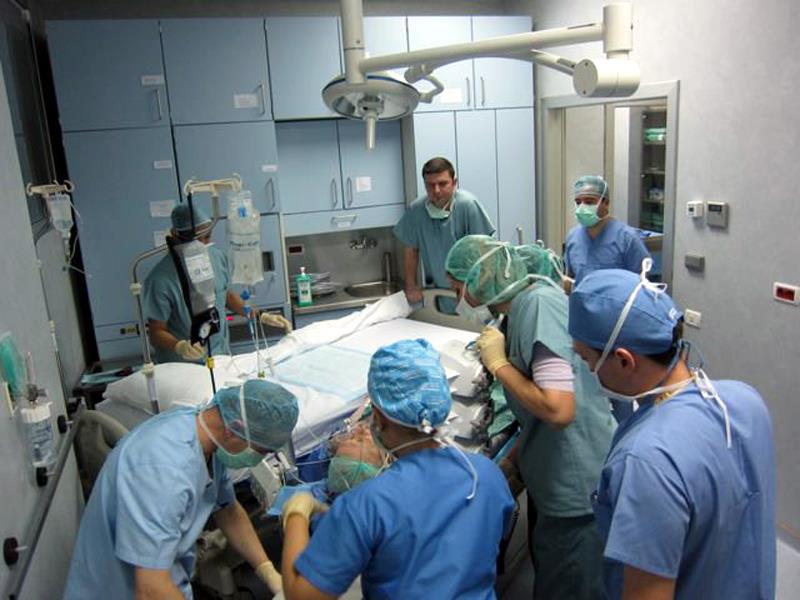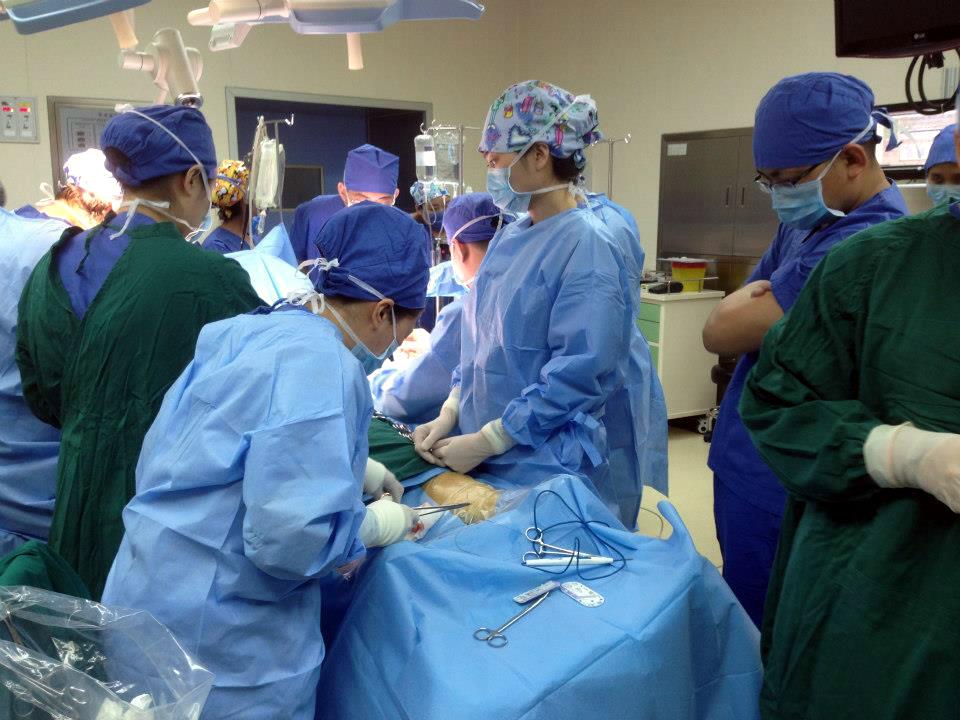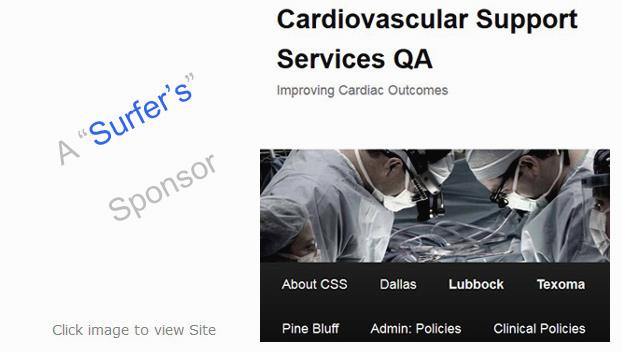Team China !
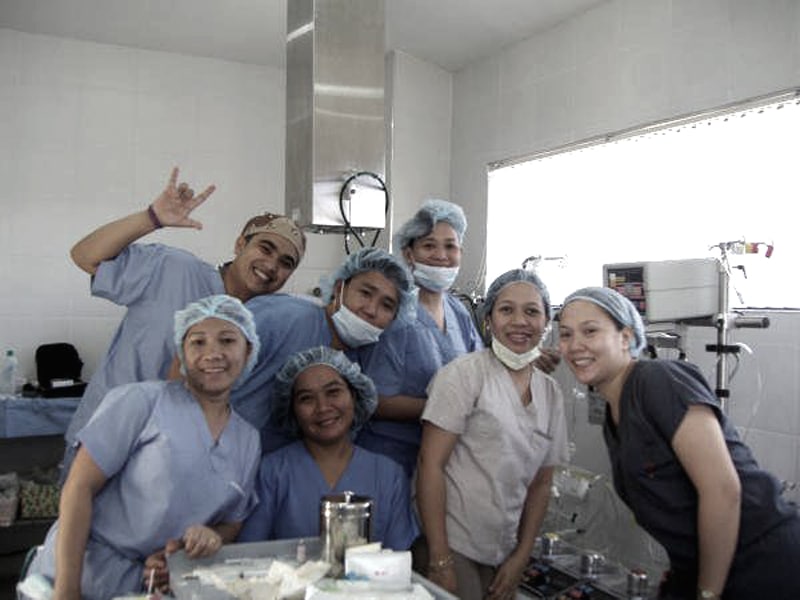
“The Perfusionist, as one of the key players in the cardiac surgical team, must not only possess the passion of work, but most importantly imbibe a dynamic collaboration and interaction among cardiac professionals within the team.”
Author / Editor:
Co-Editor Anna Lou Villena 🙂
[14]
In the ambit of Cardiac surgery, various studies were conducted in order to better improve its wedges ranging from scientific research to relational status quo maintained within the cardiac team. In fact, the American Heart Association released a recent circulation entitled “Patient Safety in the Cardiac Operating Room: Human Factors and Teamwork”. I commend each individual who contributed to this well-thought scientific statement and research.
KEY POINTS
According to AHA’s description of a cardiac surgical operating room, it is said to be a complex environment in which highly trained subspecialists INTERACT with each other using sophisticated equipment to care for patients with severe cardiac disease and significant co-morbidities. Based on this well elaborated description, the sophisticated technical know-how or skills of each healthcare professional complement each other sharing one common goal – CARE for Patients. However, the non-technical concept in the description which is INTERACTION among team members is the most significant and emergent human factor contributing to an effective surgical outcome and patient safety.
The following are the highlights of some critical components of teamwork in the aspect of nontechnical skills:
COMMUNICATION – “the exchange of information between a sender and a receiver.” Miscommunication arises when the sender inaccurately encodes a message, when the receiver decodes the sent information incorrectly, or when the information is given at the wrong time or received by the wrong individual. In this aspect, good and effective communication should be practiced in the perfusion scheme. A common open heart surgery scenario dictates that perfusionist should be attentive to the surgeon’s command and needs in order to execute an accurate response. Thus an effective communication should be open in order to foster coordinated activities, must also be adaptable so that the team members are aware and could adjust to other individual’s task, and should be concise in order to promote proper comprehension and efficiency.
COOPERATION – reflects the mutual trust among team members. The level of trust within a team affects how much members monitor each other and how committed team members are to the organization. Thus, better performance and team efficiency is paralleled to a union of mind and strength motivated to achieve one common goal.
COORDINATION – “orchestrating the sequence and timing of interdependent actions.” This entails a shared understanding of the task, the environment, and individual roles and responsibilities within the team. Most importantly, members should anticipate each other’s actions and needs without explicit communication and this is better known as mutual team understanding. Team familiarity can build coordination skills and allow team members to develop clear expectations and understanding.
COGNITION – is a shared understanding that arises from team interactions, which improves with repeated interactions. It is the team’s collective knowledge about the roles, responsibilities and capabilities of each member. Thus, a common understanding among team members would enhance shared awareness of the surrounding and be of great help in solving critical problems in dynamic situations.
CONFLICT – defines as discrepancies and incompatibilities among team members which may be centered on tasks, relationships, or processes. More so, communication is the critical means for conflict resolution. On one hand, a task-based conflict creates a positive implication as it improves group performance in the evaluation of non-routine problems and in group decision making. Whereas, negative connotation of conflicts results to lower team member satisfaction, commitment, cohesion and effectiveness especially if is based on relationship conflict which would really decrease members’ willingness to remain part of the group. More often than not, OR conflicts arises due to status asymmetry, whereby one member has greater power or seniority. Thus, collaboration and compromise is difficult to maintain.
COACHING – “direct interaction with a team intended to help members make coordinated and task-appropriate use of their collective resources in accomplishing the team’s work.” This can be used also to improve the performance of the underperforming individuals and to enhance the skills of those who show promise as future high performers. Positive effects of coaching include better team member relationships, member satisfaction, team empowerment and emotional security and safety. However, coaching behaviors are beneficial only when team members are receptive to suggestions and constructive criticisms.
OPTIMIZATION
Aside from clearly defining the different aspects of TEAMWORK and making them specifically known in order to enhance the interaction within team workers, human errors can also be reduced and prevented inside the cardiac OR by optimizing the use of structured PROTOCOLS and CHECKLISTS.
With the use of protocols, by standardizing routine and critical interactions in the procedure, the structure of information is improved and participation among team members will increase given the fact that they are guided with uniformity and familiarity in each given procedure.
Realistically, in the field of perfusion, the daily encounter of routine circuit set-up and the routine steps of an elective open heart surgery from recirculation, heparinization, cannulation, bypass initiation, cross clamp application, cardioplegia administration, rewarming, de-clamping , reperfusion, and down to OFF BYPASS. This routinized culture can sometimes trigger a negative practice of complacency. Therefore, a pre-bypass checklist is strictly incorporated and practiced in all perfusion sections.
Reiterating the importance of CHECKLISTS, these are simple cognitive tools that can improve the performance of both simple and complex tasks. These are indeed very effective reminders of routine tasks that might otherwise be overlooked. In fact, the World Health Organization (WHO) strongly advocates the universal implementation of “Surgical Safety Checklist” and timeouts.
PIVOTAL REMARK ON TEAMWORK
The Perfusionist, as one of the key players in the cardiac surgical team, must not only possess the passion of work, but most importantly imbibe a dynamic collaboration and interaction among cardiac professionals within the team. A long term commitment in this kind of profession entails a wide range of understanding not just in the scientific, clinical and technical aspects but also in the interdependent psychological and behavioral aspects when working with multiple individuals concerted physically and mentally in order to achieve efficiency in patient safety and aspiring the goal of saving and caring for patients.
Somehow, as a source of motivation, I recalled one of the questions in my interview for circuit surfer’s which explicitly mirrors the importance of teamwork in order to grow professionally.
“Q4. Discuss the physician perfusion relationship. Is it relaxed, formal, how do you interact when you need to give meds or make adjustments while on bypass?“
“From all the cardiac centers that I’ve been, regardless of our diversified culture and nationality, I am just so fortunate enough that my relationship with the doctors is smooth sailing. Everyone is really a team player and that is where good relationship is rooted. Of course during work, we respect each others’ expertise and I also know my limitations even though they trust my competence especially in handling medications while on bypass.”
